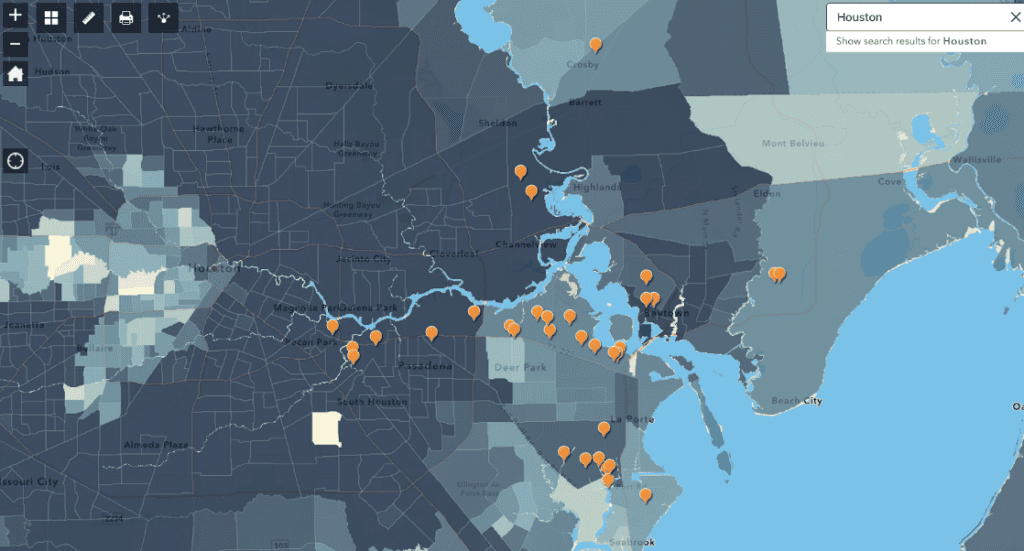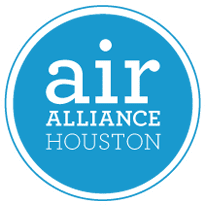Support EPA action on Ethylene Oxide, Vinyl Chloride, and other air toxics
The US Environmental Protection Agency (EPA) heard the call from community members to treat Ethylene Oxide (EtO), Vinyl Chloride, and other chemicals as the serious health risks that they are. Now, the EPA needs to hear from us again to get their new rule over the finish line.
Last month, the EPA released new National Emission Standards for Hazardous Air Pollutants for the Chemical Manufacturing Industry, one of the regulations governing the release of air toxics by chemical plants. In the new rule, the EPA made good on their promise to use a more protective cancer risk value for EtO and other known carcinogens such as benzene, 1,3-butadiene, and vinyl chloride – yes, the same chemical that burned East Palestine, OH – all of which are emitted by the many chemical plants that line our communities.
The proposed new rule – also called the “HON” Rule, for Hazardous Organics – would do the following:
- Strengthen equipment standards at the plants to prevent, detect, and repair leaks including of storage tanks.
- Remove emissions exemptions during startup, shutdown, and malfunctions and from other sources that are currently uncontrolled such as vents and ports.
- Require more rigorous fenceline monitoring and public reporting. When annual average air concentrations of chemicals are higher than an “action level” at the fenceline, facilities would be required to find the source and make repairs.
- Apply an updated health risk assessment that accounts for the latest science and the cumulative impacts to communities within a six-mile radius of these facilities.
The benefits are significant. The EPA estimates that this new rule would reduce over 6,000 tons of air toxics emissions each year. The biggest risk reduction comes from cutting EtO emissions at just 8 chemical plants in Texas and Louisiana alone.

Click on the photo to see FracTracker showing where these air toxics facilities are located and check your own address.
At the hearing, industry representatives will most likely present challenges to the EPA’s proposal. Tell them that you agree with EPA: communities must be protected from cancer-causing air pollution. The proposed rule changes will cost less than 1 percent to the industry’s bottom-line, but could be priceless for preventing cancer in our communities.
Join your fellow community members in supporting the EPA’s strong action to protect Gulf communities by sharing your concerns and support at the hearing on the 16th.
You will be able to select your preferred time slot to speak in the registration form. If all time slots are taken, the EPA has committed to holding a second day of hearings. Written comments will be taken until June 26, 2023.
Talking Points on the New HON Rule
- EtO and other carcinogenic chemicals harm the health of community members along the Houston Ship Channel, and the cancer risks we face are unacceptable.
- The EPA’s proposed rule stands with science that better protects communities from these health hazards.
- Texas and Louisiana are hard hit by EtO pollution – we need the support of the federal government to ensure that our communities can be healthy.
- Strong EtO protections help protect people of color who are more often exposed to harmful pollution.
- The EPA’s assessment shows that the new rule could reduce the number of people with elevated air toxics cancer risk by 96 percent.
For assistance with drafting your comments, please don’t hesitate to contact AAH’s Jennifer Hadayia [email protected]
Further Information and Previous Advocacy Involving Ethylene Oxide:
- AAH’s Statement On EPA’s Announcement To Pursue Environmental Justice After Visit To Gulf Coast, January 2022
- Ethylene Oxide: EPA Meeting Update, September 2021
- Organizations pressure EPA, TCEQ, and other Region 6 state agencies to inform communities about the increased risk of cancer from ethylene oxide, April 2020
- What is ethylene oxide?
- Ethylene Oxide
- Air Pollution Factsheets: What you need to know about Houston’s most hazardous air pollutants
- The Most Detailed Map of Cancer-Causing Industrial Air Pollution in the U.S.
- Blog: How East Palestine’s environmental disaster has augmented my reality in Houston, TX
